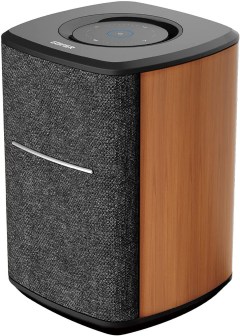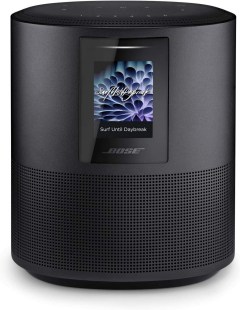Buying guide for Best smart speakers
The future has officially arrived: we’re finally in the technological age where we can talk to our appliances and devices and get them to do anything from turning the lights off to playing a personalized radio station from the internet. Smart assistants – cloud-based artificial intelligence that can respond to voice commands – are leading the way to this technical bliss, and they’re most commonly found in smart speakers.
Smart speakers are small, unassuming gadgets that connect to your WiFi network and accept voice commands, as well as input from a smartphone app. They can do just about anything you can think of automating, and they’re quickly solidifying their role in homes across the country as a centralized resource for entertainment, information, and even making phone calls over the web.
Which digital assistant is best?
Your smart speaker experience will be defined by the quality of the digital assistant, and each available option has unique strengths and quirks. Here’s what you need to know about the three main digital assistants you’ll encounter in various smart speakers.
Alexa from Amazon
Amazon’s Echo series of devices rely on the shopping giant’s industry-leading voice-controlled services. Alexa is the pioneer of smart speakers and typically the first to deliver new services to consumers (such as their recent integration with Nest thermostats). More importantly, Alexa has maintained a lead by being the best with artificial intelligence (AI) and voice recognition; Echo devices can understand just about anything you say, whether you want to check movie times, place an Amazon product order, or simply lower the volume.
Google Home from Google
Although it doesn’t have a catchy name like Alexa or Siri, Google’s digital assistant comes with devices under the Google Home brand, and they’re in more homes across the U.S. than any other competitor. Google Home has competent (but not perfect) voice recognition, so you may have to repeat yourself occasionally. Google Home is the only digital assistant powered by Google Search, which gives it a significant advantage over the competition.
Siri from Apple
Apple products are typically “best in class” for most categories, but when it comes to smart speakers, they’re uncharacteristically lagging behind. Siri’s voice recognition is so-so, and in many cases where other smart speakers offer options (like allowing you to choose which music-streaming service you use), Siri limits users to Apple’s preferred options (like Apple Music instead of Spotify or TIDAL).
Killer feature: multiroom audio
Once you’ve added a smart speaker to your home, it can be hard to avoid the temptation to buy more. But if you do go all-in on smart speakers and place them strategically throughout the house, you’ll be able to experience a new benefit: multiroom audio.
Many smart speakers can work with other models from the same brand, and coordinate audio so that it’s playing the same music through every available smart speaker in your house. The resulting effect is multiroom audio: a soundtrack that follows you no matter where you are. Multiroom audio is great for parties or open houses, and so is being able to use voice commands to control it all wherever you go.
If you’re interested in setting up multiroom audio in your home, pick your first smart speaker wisely because you’re essentially deciding on which brand you’ll be using as you build out your multi-speaker environment.
Did you know?
All smart speakers are activated by a unique phrase. For example, devices using Amazon’s Echo services rely on the user saying, “Alexa,” and Google Home devices require the user to say, “OK, Google”.
STAFF
BestReviews
Smart speaker uses
For most people, the first question is typically, “What exactly would I do with a smart speaker?” While most models are learning new skills all the time, it’s worth remembering the core functions that make owning a smart speaker so much fun. Here are things we most love doing with our smart speakers.
Streaming music
Smart speakers are perfect for listening to your favorite music-streaming services, and some even allow you to rate music with voice commands so they can create a custom “radio station” based on your unique tastes. Having your own voice-powered personal radio may be a basic feature, but it still feels like a luxury.
Local traffic and weather updates
All smart speakers can provide you with news and information about your local environment, including weather and traffic conditions. Having a smart speaker can revolutionize how you go about your morning – not only can it tell you the best way to get to work but it can also help you choose the right clothes for the weather.
Smart home control
If you have any smart home tech in your house, you may be able to control it with a smart speaker. Most commonly, people use their smart speakers with WiFi thermostats or smart light switches and bulbs. Using voice commands for things like air conditioning or indoor lighting can take some getting used to, but it offers incredible convenience.
"Some smart speakers can be paired with an identical model and used in unison for two-channel stereo music. On their own, smart speakers play back two-channel sound through a single speaker, which will still sound good but not quite as breathtaking as using two smart speakers together."
STAFF
BestReviews
Smart speaker prices
Don’t be fooled by the low retail prices of smart speakers. Consider these price ranges while you’re shopping.
Between $50 and $84
Most smart speakers at this price offer solid digital assistant services but include speakers that leave a lot to be desired. If you need a battery-powered, portable smart speaker – or you don’t plan on using your smart speaker to listen to a lot of music – an entry-level model will do perfectly.
Between $85 and $149
In this price range, you’ll find most of the name-brand flagship smart speakers that offer a nice balance of audio quality and price. These smart speakers are good for just about any size room and have an impressive microphone range. If you’re looking for a smart speaker that runs the whole gamut of digital assistant services and is good enough for casual music listening, you can easily find a solid option for less than $150.
Between $150 and $500
Smart speakers at this price come with larger, higher-quality speakers but are otherwise functionally identical to less expensive models. Smart speakers in this price range are for people who need big, audiophile-quality sound and high-end aesthetics.
Tips
-
Learn the voice command to change your smart speaker’s volume to a specific level. Volume settings on most smart speakers run from one to ten, where one mutes the speaker and ten is the loudest it gets. Experiment to find which number suits you best for local volume and remember it. If someone else changes the volume, you can change it back to your exact preferred level.
-
Set up a PIN code on your smart speaker for making purchases. All smart speakers are tied to shopping engines, so you can easily order products from online retailers through simple voice commands. Being able to shop with a digital assistant is fun, but not just anyone should be allowed to buy things with your account, so set up a PIN code that will be required for each purchase. With a PIN code in place, you’ll be safe from accidental and unintended purchases.
- If you have more than one smart speaker, learn to use them as house intercoms. Most smart speaker brands build their devices to connect with one another, and one of the most popular uses is a throwback to houses from the 1980s – using smart speakers as intercoms. Look into your smart speaker’s intercom functionality, and relive the joy of talking between rooms in the house.
FAQ
Q. Can I use my own custom “wake word” with a smart speaker?
A. Not yet. All smart speakers come with a few predetermined options for the word you use to initiate a voice command, but none of them allow you to set a custom wake word. For example, devices powered by Amazon’s digital assistant can use “Alexa,” “Echo,” or “Computer,” but that’s it.
Q. Can a smart speaker call 9-1-1 in an emergency?
A. Yes. Most smart speakers include emergency services functions, so you can call an ambulance or the police with voice commands in situations where you can’t get to a phone.
Q. Can I listen to my own CDs or MP3s with a smart speaker?
A. Usually, yes. Most smart speakers have auxiliary 3.5mm ports so that you can connect any audio source for playback – even an LP turntable, as many vinyl enthusiasts do. Some models also support wireless connectivity via Bluetooth or WiFi for streaming audio directly from a smartphone or tablet. If you’re planning on connecting a smart speaker to your existing audio components, check to be certain the connectivity options of the model you buy meet your needs.





















